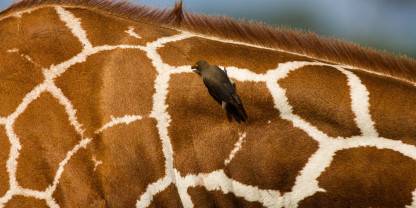Average Expert Rating
Rating Breakdown
Write a User ReviewThe Mirror of Samburu
The other huge plus for this park is that it’s considerably quieter than Samburu (itself not that busy a park). There are three probable reasons for this. Firstly, the generally perceived impression is that wildlife here is not as numerous as in Samburu. Secondly,
Read more
most of the accommodation is over in Samburu and, thirdly, at the time of writing, the bridge between Samburu and Buffalo Springs was down (and had been for a few years), which meant that driving from one to the other entailed a lengthy drive back to the main road and back through the entrance gate of each park. The imposition of separate entry fees for the two reserves means that visiting both can be expensive. Buffalo Springs certainly deserves more attention than it gets because this is a fantastic park.Samburu’s Southern Twin
Buffalo Springs forms a contiguous unit with Samburu National Reserve, with the Ewaso Nyiro River – crossed by two bridges – being the common border. Please note that the bridges had been destroyed by floods at the time of writing, and a new policy of separate entry fees now applies to the reserves, making for an expensive visit if you visit both. The bush on this southern side of the river is a little more open than in the north, and wildlife seems slightly less plentiful, perhaps because so much of it concentrates in the vicinity of the eponymous hot springs for which the park is named. Buffalo Springs also tends to carry less tourist traffic, because most of the lodges lie on the north side of the river. Otherwise, the two reserves are very similar in overall feel.
Samburu’s Lesser-Known Neighbor
The reserve is managed by the Isiolo County Council, which means that its roads and other park infrastructure tend to be in a poor state of repair. It also feels like the county council has permitted too many large hotels to be developed along the river, destroying the sense of wilderness and negatively impacting the migratory and resident wildlife in this tiny 131km2/51mi2 protected area.
The main geological feature of this semi-arid reserve is an ancient lava-terrace in the southeast
Read more
known as the Champagne Ride. The elephants here are both plentiful and incredibly relaxed, providing some of the best elephant-viewing opportunities in all of East Africa. The Buffalo Springs supporting cast are equally impressive with endangered Grevy’s zebras, reticulated giraffes, Beisa oryx, gerenuks, buffalos, hippos, lions, leopards, cheetahs, hyenas and some enormous crocodiles. A bird list in excess of 390 species rounds off the Buffalo Springs safari spectacle.Leafy Oasis in a Thirsty Land
Buffalo Springs is a mirror image of the Samburu reserve that lies on the other side of the Ewaso Ng’iro River, whose waters are crucial to the survival of the local wildlife in the burning semi-deserts of what old-time Kenyans called the NFD – the stark and spectacular Northern Frontier District. Game drives here and across the river on the Samburu side will bring you up close and personal with elephant and buffalo as well as Northern Kenya’s “Special Five”: Grevy’s zebra, reticulated giraffe, beisa oryx, gerenuk and Somali ostrich. As for cats, I have never failed to find lion, leopard and cheetah. Birding is also good – especially along the river. The only downside is the presence of too many tourist vehicles – inevitable with such a popular small reserve.
Buffalo Springs: Samburu Without the Crowds
It used to be that you could visit Samburu and Buffalo Springs by simply crossing a bridge, and it felt as if they were almost a single park. Then the bridge between the two broke, and to get between the two became a half-day trip. The authorities saw an opportunity and began charging separate entry fees. Not surprisingly, they still haven’t fixed the bridge…
Whatever the overall impact, the new reality has been good for Buffalo Springs. It still has the same wildlife and the landscapes remain as spectacular as ever, but with far fewer visitors exploring the park, it now has a genuine wilderness feel to go with its other assets. I’ve always felt that the Buffalo Springs side of the Ewaso Nyiro River is the best place in Kenya to see leopards, and elephant sightings always come with a superb backdrop. Add in Grevy’s zebra, gerenuk and other northern specialties, and there are so many reasons to love this wild place.
South of the Ewaso Ngiro River
Buffalo Springs shares the arid environment and associated wildlife with its popular neighbour Samburu National Reserve. The two reserves are separated by the Ewaso Ngiro River, the main source of water in the area. Wildlife seems to be less abundant south of the river (in Buffalo Springs), but so are tourists. The river is home to some monster crocodiles, and thirsty elephants are never far away. Look out for Grevy’s zebra, gerenuk, Beisa oryx and the beautiful reticulated giraffe. All these dry-country specials are relatively easily seen here, alongside more widespread species such as buffalo, impala and gazelles. I’ve had some good cheetah and lion sightings in Buffalo Springs, but leopards are generally more habituated (and therefore easier to see) in Samburu.

